The Economic Impact of Deforestation
- September 2, 2024
- 1 comment
Deforestation has a major economic impact, disrupting ecosystems and economies across the globe. While activities like agriculture and logging can generate short-term profits, they lead to long-term challenges, including economic losses tied to environmental degradation. The economic effects of deforestation ripple through industries, affecting sustainability and global markets.

The link between deforestation and economic factors highlights a critical imbalance: while deforestation may yield short-term benefits, its lasting consequences often outweigh these gains. These impacts ripple through global markets, disrupt communities, and strain environmental systems, emphasizing the high economic cost of deforestation.
What is Deforestation?
Deforestation is the permanent removal of trees, where forested areas are transformed for purposes like agriculture, logging, or urban development. It typically occurs in two forms: clear-cutting, where all trees in an area are stripped, and selective logging, which targets specific trees. While selective logging may appear less harmful, it still disrupts ecosystems and fuels the broader trends of deforestation. These activities not only degrade the environment but also result in economic consequences, such as deforestation-related economic losses and long-term costs to global sustainability.
1. Global Economic Impact of Deforestation
Deforestation is occurring at an alarming rate, with approximately 10 million hectares of forest lost annually. This large-scale deforestation significantly impacts regions like the Amazon, Southeast Asia, and Central Africa, where tropical rainforests face the greatest threats. These forests are not only biodiversity hotspots but also essential for carbon sequestration, a critical factor in mitigating climate change.

The economic effects of deforestation are profound, as the loss of these forests reduces natural resources, destabilizes ecosystems, and contributes to economic challenges such as deforestation-related economic losses. The global economy also feels the strain, as industries relying on forest resources experience disruptions, and the long-term costs of environmental damage continue to rise.
2. Economic Drivers Behind Deforestation
Deforestation is largely driven by economic activities such as agriculture, logging, mining, and infrastructure development. Agriculture, particularly large-scale ventures like cattle ranching and palm oil plantations, is responsible for over 80% of global deforestation. These industries prioritize short-term profits, often overlooking the long-term economic costs of deforestation.

The demand for timber and paper products fuels extensive logging, while mining operations and infrastructure projects, such as roads and dams, accelerate forest loss. These activities frequently open up previously untouched areas, intensifying deforestation and its broader economic consequences. The impact of deforestation on the economy includes reduced natural resources, biodiversity loss, and long-term costs to sustainability and ecosystem services.
3. Short-Term Economic Impact of Deforestation
Deforestation often delivers immediate financial benefits, especially in developing regions where agriculture and logging are economic mainstays. Converting forests into agricultural land can stimulate local economies by providing income and employment opportunities. Similarly, logging generates jobs and revenue from timber sales, contributing significantly to national GDP in some cases.

However, these short-term gains are temporary and come at a steep price. The economic cost of deforestation becomes evident over time, as degraded ecosystems lead to resource depletion, reduced biodiversity, and diminished long-term productivity. These consequences highlight the fragile balance between immediate profits and sustainable economic growth.
4. Long-Term Economic Impact of Deforestation
The long-term economic consequences of deforestation are profound, often outweighing short-term gains. A critical loss comes in the form of ecosystem services like water purification, soil fertility, and climate regulation. When forests are cleared, soil erosion accelerates, reducing agricultural productivity and forcing further deforestation to sustain crop yields creating a destructive cycle.

Deforestation also disrupts water cycles, leading to water shortages that affect communities, agriculture, and industries reliant on hydropower generation. These challenges highlight the economic sustainability risks of deforestation, as the degradation of natural resources undermines long-term growth and stability. The economic impact of deforestation extends beyond local economies, with global markets also bearing the cost of these disruptions.
5. Economic Impact on Indigenous Communities
Deforestation profoundly impacts indigenous communities, disrupting their livelihoods and traditional ways of life. As forests disappear, these communities are often displaced, facing economic hardship and the loss of their cultural heritage. Forest resources that once provided food, medicine, and income are replaced by barren lands, leaving many without sustainable means of support.

Without formal land rights, indigenous peoples are particularly vulnerable to land grabs by agricultural and logging companies. This exploitation not only exacerbates economic inequality but also highlights the broader economic consequences of deforestation, including social and cultural losses that cannot be easily quantified or restored.
6. Economic Impact of Deforestation on Climate
Forests play a vital role in mitigating climate change by acting as carbon sinks, absorbing significant amounts of carbon dioxide. When deforestation occurs, this carbon storage capacity is lost, and stored carbon is released back into the atmosphere, accelerating global warming.

The economic consequences of deforestation-induced climate change are far-reaching. Extreme weather events lead to costly infrastructure damage, while reduced agricultural productivity strains food supplies and livelihoods. Additionally, the spread of climate-related diseases drives up healthcare costs, further burdening economies. The impact of deforestation on the economy highlights the urgent need for sustainable forest management to avoid these escalating costs.
7. Biodiversity Loss and Economic Impact of Deforestation
Deforestation significantly contributes to biodiversity loss by destroying habitats and driving species to extinction. This loss has far-reaching economic consequences, as biodiversity underpins industries such as pharmaceuticals, agriculture, and tourism.

The depletion of genetic resources limits the development of new crops and life-saving medicines, directly impacting food security and healthcare innovation. Furthermore, regions that depend on wildlife and natural landscapes for tourism suffer financially as biodiversity declines. The economic effects of deforestation highlight how preserving biodiversity is essential not only for ecosystems but also for the industries and communities that rely on it.
8. Global Markets and the Economic Impact of Deforestation
Deforestation has ripple effects on global markets, disrupting supply chains in industries heavily reliant on forest products like timber and paper. The reduced availability of these resources creates supply shortages, increasing production costs and market volatility.

Commodity prices are also impacted by deforestation. For instance, forest loss in cocoa-producing regions reduces crop yields, driving up cocoa prices and straining global markets. These fluctuations underscore how the economic effects of deforestation reach beyond local economies, influencing international trade and the stability of industries worldwide. Sustainable forest management is essential to mitigate these risks and ensure market resilience.
Case Studies: Countries Impacted by Deforestation
- Brazil and the Amazon: The Amazon rainforest, often called the “lungs of the Earth,” is critical for regulating the global climate. However, deforestation in the Amazon has accelerated due to agricultural expansion, particularly for soy and cattle. The economic benefits are short-lived, as the loss of the forest could lead to significant climate impacts that would harm Brazil’s agricultural sector in the long run.
- Southeast Asia and Palm Oil: Palm oil production is a major driver of deforestation in Southeast Asia. While it contributes to economic growth, the environmental costs, including biodiversity loss and greenhouse gas emissions, are substantial. The destruction of forests for palm oil plantations also threatens the livelihoods of local communities.
- Africa’s Congo Basin: The Congo Basin is home to the second-largest rainforest in the world. Deforestation in this region is driven by logging, agriculture, and mining. The loss of these forests could have dire consequences for the global climate, as well as for the millions of people who depend on the forest for their livelihoods.
Economic Models for Sustainable Forest Management
Sustainable forest management offers a way to balance economic development with environmental conservation. Economic incentives, such as payments for ecosystem services (PES), can encourage landowners to preserve forests. Sustainable forestry practices, including selective logging and reforestation, can help maintain the economic value of forests while minimizing environmental damage.
Global Initiatives and Policies
International agreements and policies, such as the Paris Agreement, aim to reduce deforestation and its economic impacts. NGOs and environmental organizations play a critical role in advocating for forest conservation and sustainable land use practices. Additionally, governments can implement policies that promote reforestation and the sustainable use of forest resources.
The Role of Technology in Combating Deforestation
Advances in technology, such as remote sensing and satellite monitoring, are essential tools in the fight against deforestation. These technologies allow for the real-time tracking of forest loss, enabling better enforcement of conservation policies. Additionally, innovations in sustainable agriculture, such as agroforestry, can reduce the need for deforestation by increasing the productivity of existing farmland.
Below is a table that summarizes and quantifies the information provided for each section related to deforestation.
| Section | Key Metrics and Calculations |
|---|---|
| 3. Global Scale of Deforestation | – Annual Forest Loss: 10 million hectares – Regions Most Affected: Amazon, Southeast Asia, Central Africa |
| 4. Economic Drivers of Deforestation | – Agriculture’s Share: 80% of global deforestation – Primary Industries Involved: Agriculture (80%), Logging, Mining, Infrastructure Development |
| 5. Short-Term Economic Gains from Deforestation | – GDP Contribution: Significant in developing countries – Job Creation: Logging and agriculture sectors create substantial employment |
| 6. Long-Term Economic Consequences | – Loss of Ecosystem Services: Water purification, soil fertility, climate regulation – Soil Erosion Impact: Decreased agricultural productivity |
| 7. Impact on Indigenous Communities | – Displacement Rate: High among indigenous communities – Cultural Loss: Severe, with traditional livelihoods being lost |
| 8. Deforestation and Climate Change | – Carbon Sequestration Loss: Significant, contributing to global warming – Economic Costs: Infrastructure damage, reduced agriculture, increased healthcare costs |
| 9. Biodiversity Loss and Its Economic Impact | – Species Extinction: Significant due to habitat destruction – Industry Impacted: Pharmaceuticals, agriculture, tourism |
| 10. Economic Impact on Global Markets | – Supply Chain Disruption: High in timber and paper industries – Commodity Price Fluctuations: Notable, e.g., cocoa production impacted by deforestation |
Totals and Calculations:
- Global Annual Forest Loss: 10 million hectares
- Agriculture’s Contribution to Deforestation: 80%
- Industries Affected by Biodiversity Loss: Pharmaceuticals, Agriculture, Tourism
- Major Regions Impacted by Deforestation: Amazon, Southeast Asia, Central Africa
The table captures the quantitative and qualitative impact of deforestation across different sectors and regions. It highlights the large-scale loss of forests and the significant role of economic activities in driving deforestation, while also considering both the short-term economic benefits and the long-term consequences on global markets, indigenous communities, biodiversity, and climate change.
Final Conclusion
The economic impact of deforestation is profound, affecting not only the countries where forests are being cleared but also the global economy. While deforestation may provide short-term financial benefits, the long-term consequences are dire, threatening ecosystems, economies, and the climate. Sustainable forest management and global cooperation are essential to mitigating these impacts and ensuring a more balanced approach to economic development.
Frequently Asked Questions (FAQs)
- What are the primary economic drivers of deforestation?
The main drivers include agriculture, logging, mining, and infrastructure development, with agriculture accounting for 80% of global deforestation. - How does deforestation contribute to short-term economic growth?
Deforestation can provide immediate financial gains through the conversion of forests to agricultural land, logging, and resource extraction, boosting local economies and contributing to GDP. - What are the long-term economic consequences of deforestation?
Long-term impacts include loss of ecosystem services, soil degradation, water scarcity, and reduced agricultural productivity, which can lead to significant economic losses. - How does deforestation impact indigenous communities economically?
Indigenous communities often face displacement and loss of livelihoods due to deforestation, leading to economic hardship and loss of cultural heritage. - What is the relationship between deforestation and climate change?
Deforestation exacerbates climate change by reducing carbon sequestration and increasing greenhouse gas emissions, leading to economic costs from extreme weather and reduced agricultural yields. - How does deforestation affect global markets?
Deforestation can disrupt supply chains, particularly in industries reliant on forest products, and lead to fluctuations in commodity prices. - What role does biodiversity loss play in the economic impact of deforestation?
Biodiversity loss reduces ecosystem services and impacts industries such as pharmaceuticals, agriculture, and tourism, leading to potential economic losses. - Which regions are most affected by deforestation?
The Amazon, Southeast Asia, and Central Africa are the most affected regions, experiencing high rates of forest loss and significant economic impacts. - Can sustainable forest management reduce the economic impact of deforestation?
Yes, sustainable practices like selective logging, reforestation, and economic incentives for conservation can help mitigate the economic damage caused by deforestation. - What global initiatives are in place to combat deforestation and its economic effects?
International agreements like the Paris Agreement, as well as efforts by NGOs and governments, aim to reduce deforestation and promote sustainable land use to minimize economic losses.

James Wilson
Forestry AuthorJames Wilson has over 15 years of experience in forestry economics, specializing in sustainable practices, investment opportunities, and financial management. He has contributed to notable publications like "Forestry Today" and "EcoFinance Journal" and is known for providing practical and insightful advice. With a degree in Environmental Economics, James stays updated through continuous learning and active participation in industry discussions. Outside work, he enjoys hiking and nature photography, bringing a well-rounded perspective to his professional role.

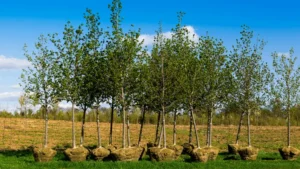
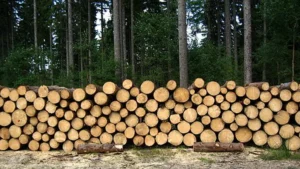
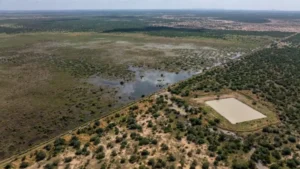
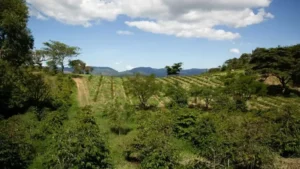
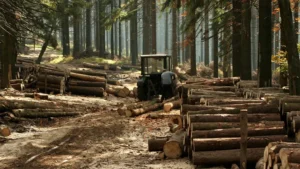

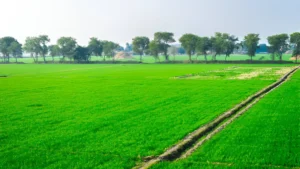

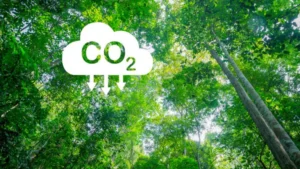


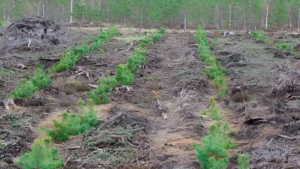
ok
jdbcdbcskbcjd
December 9, 2024 9:47 pm